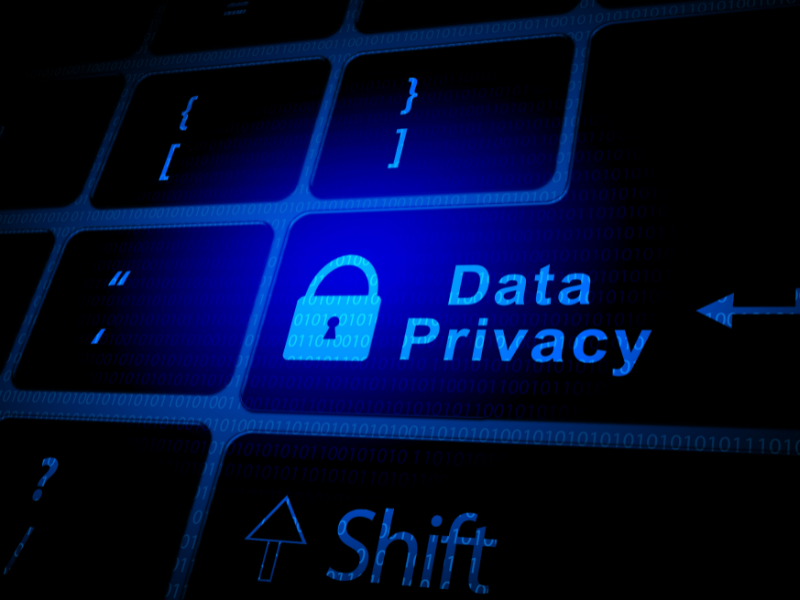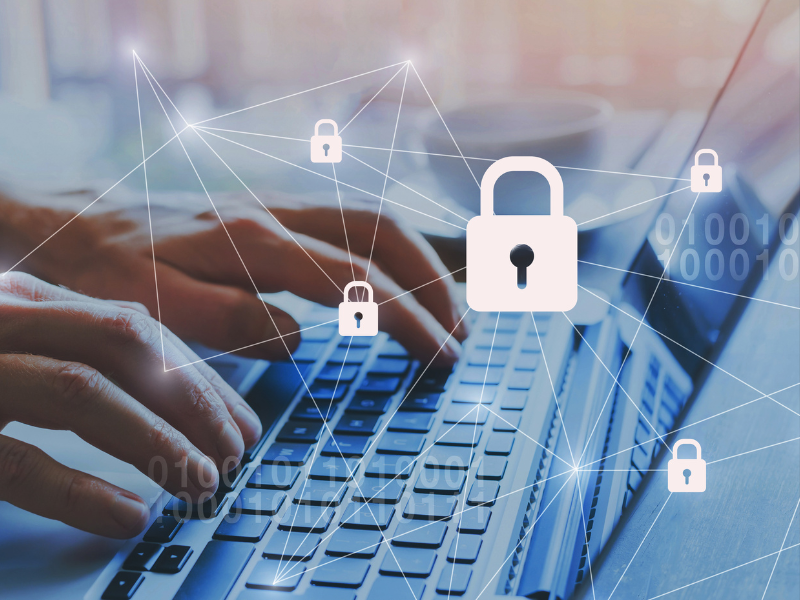Balancing privacy and security has become one of the most critical challenges in our increasingly digital world. On one hand, privacy is essential for protecting personal data; on the other, security is paramount for safeguarding systems and networks against external threats. These two concepts often feel at odds, leaving individuals and businesses grappling with how much privacy they’re willing to sacrifice for security — or vice versa.
Key Takeaways
- Privacy focuses on safeguarding personal information from unauthorized access, while security aims to prevent harm to systems and data.
- Balancing privacy and security is critical to prevent both privacy violations and vulnerabilities from cyber threats.
- Technological advancements such as encryption and surveillance systems impact how we approach privacy and security, creating both opportunities and risks.
- Striking the right balance requires ethical considerations, such as transparency, proportionality, and accountability.
- Government policies such as GDPR and the USA PATRIOT Act provide frameworks for addressing privacy and security challenges.
- Collaboration among policymakers, technology providers, and stakeholders is necessary to ensure both privacy and security coexist effectively.
As digital transformation accelerates, the debate around privacy and security grows more complex. From encryption to surveillance, every technological choice impacts how much control we have over our own data. It’s not just about protecting ourselves; it’s about finding a sustainable way to coexist with systems designed to keep us safe. Let’s explore this delicate balance between privacy and security, examining how we can navigate the intersection of both without compromising too much of either.
In this article, we will discuss the key differences between privacy and security, the challenges in balancing both, and the innovative solutions available today. By highlighting privacy-preserving technologies like Private Identity’s on-device biometric authentication, we will show how businesses and individuals can maintain both security and privacy.

Understanding Privacy vs Security
At the core of managing digital identities is understanding the difference between privacy and security. These two concepts overlap, but their goals are distinct. Privacy is about controlling who has access to personal information and ensuring that individuals can make informed decisions about their data. Security, on the other hand, is about protecting systems and networks from unauthorized access, cyberattacks, or data breaches.
Privacy
Privacy is the right to control one’s personal data. It involves limiting access to personal information and ensuring that sensitive data is used only for its intended purposes. In the digital age, privacy is becoming more challenging to maintain as businesses, governments, and third parties collect vast amounts of personal information. Privacy is particularly concerned with protecting personal data, such as financial records, medical information, online behaviors, and identity documents.
Privacy-preserving technologies like Private Identity address this by ensuring that biometric data, for example, is processed on-device and never transmitted to the cloud. This approach eliminates the risk of data breaches and helps businesses comply with privacy regulations.
Security
While privacy focuses on controlling access to information, security is about defending against external threats. Security measures are put in place to protect sensitive data, systems, and networks from cyber threats such as hacking, malware, and ransomware. These measures include firewalls, encryption, intrusion detection systems, and multi-factor authentication (MFA).
Security often requires monitoring user activity, analyzing patterns, and scanning for unusual behavior that could indicate a breach. This level of monitoring can sometimes conflict with privacy because it requires collecting data that could infringe on individual rights. For example, implementing surveillance measures can compromise privacy if it involves collecting personal data without consent.
The Importance of Privacy in the Digital Age
Personal Data Protection
In the digital age, personal data is a valuable asset. It’s collected from a range of activities, from online shopping and social media use to healthcare and financial transactions. Without privacy measures, this data could be misused or exploited. For example, identity theft, financial fraud, and personal information leakage are all potential consequences of inadequate data protection.
Privacy-preserving technologies like Private Identity’s on-device processing allow businesses to authenticate identities without storing or transmitting sensitive data. This ensures that individuals retain control over their personal information while still accessing the services they need.
Freedom of Expression
Privacy also plays a significant role in safeguarding freedom of expression. When individuals feel their activities are constantly monitored, they may choose to censor themselves. This leads to a chilling effect on public discourse, reducing the ability of individuals to freely share ideas, opinions, and political views. By ensuring privacy, individuals are empowered to engage in meaningful conversations and activism without the fear of retaliation or surveillance.
Privacy fosters innovation and societal progress by allowing individuals to express themselves freely. This is why privacy is so intertwined with human rights, as it allows for the free exchange of ideas without the fear of judgment or government intervention.
The Role of Security in Modern Society
Preventing Cyber Threats
Security is paramount in protecting individuals, businesses, and governments from increasingly sophisticated cyber threats. As more critical systems and personal information are stored digitally, the need for strong security protocols becomes more pressing. Cybercriminals use various methods — from phishing to brute-force attacks — to gain unauthorized access to sensitive data.
To prevent this, businesses deploy firewalls, encryption, and intrusion detection systems to protect against attacks. For example, Private Identity’s encryption and multi-layered security mechanisms ensure that only the authorized user has access to their personal data, even if the device is compromised.
Ensuring Public Safety
While privacy is essential for personal freedom, security also ensures the safety of public infrastructure and services. Security frameworks help protect critical infrastructure, such as transportation networks, healthcare systems, and government institutions, from sabotage, terrorism, and other threats.
For instance, surveillance technologies, including facial recognition and video monitoring, help law enforcement agencies detect criminal activity and prevent threats in real-time. However, these technologies often raise privacy concerns, especially when they are used for mass surveillance without public consent or oversight. Striking a balance between security and privacy in public safety is crucial to avoid overreach.
Balancing Privacy and Security
Challenges in Achieving Balance
Balancing privacy and security is no easy feat. Privacy often requires limiting data collection, while security demands broader monitoring of data and systems to prevent cyberattacks. For example, to ensure privacy, communication platforms often encrypt messages end-to-end, meaning that even the service provider cannot access the contents of messages. However, law enforcement agencies may find it difficult to access these encrypted messages when investigating criminal activities.
Rapid technological advancements make achieving balance even more challenging. Surveillance systems, AI-driven fraud detection, and biometric authentication can enhance security, but they also introduce privacy risks if not implemented carefully.
Ethical Considerations in Privacy and Security
Ethical considerations play a significant role in how privacy and security are balanced. Transparency, for example, is critical in ensuring that individuals are informed about how their data is used and shared. If individuals do not know how their data is being collected or for what purpose, their ability to make informed choices is compromised.
Proportionality ensures that security measures do not exceed what is necessary to protect against threats. For instance, mass surveillance to prevent minor threats would be disproportionate and violate privacy rights. On the other hand, privacy should not be used as an excuse to ignore the need for robust security measures.
Accountability is another ethical consideration. Those responsible for implementing security and privacy measures must be held accountable for their actions. Businesses must ensure they have adequate protections in place to prevent data breaches and misuse. If a breach occurs, organizations must take responsibility, notify affected individuals, and implement measures to prevent future incidents.
Examples from Government Policies
USA PATRIOT Act vs GDPR
Government policies provide frameworks for balancing privacy and security. The USA PATRIOT Act, enacted after the 9/11 attacks, increased surveillance and data collection powers for national security purposes. While these measures helped prevent terrorist attacks, they also raised concerns about civil liberties and privacy violations.
In contrast, the General Data Protection Regulation (GDPR) in the European Union places privacy at the forefront, requiring businesses to obtain explicit consent from individuals before collecting their personal data. GDPR aims to minimize data collection while ensuring that businesses adopt strict security measures to protect personal information.
These examples highlight the trade-offs between privacy and security. While the USA PATRIOT Act emphasizes security at the cost of privacy, GDPR prioritizes privacy without sacrificing security.
The Impact of Technology on Privacy and Security
Advances in Surveillance Technology
Surveillance technologies, such as AI-powered facial recognition and predictive policing, have the potential to enhance security by identifying threats before they occur. These technologies can help law enforcement detect criminal activity, prevent terrorist attacks, and monitor high-risk areas. However, they also pose significant risks to privacy if not used responsibly.
Private Identity’s on-device processing provides an example of how technology can enhance security while respecting privacy. By processing biometric data on the user’s device, Private Identity ensures that sensitive data is not transmitted or stored in centralized systems, which reduces the risk of privacy violations.
The Role of Encryption
Encryption is a fundamental technology in safeguarding privacy. By converting data into an unreadable format, encryption ensures that only authorized parties can access the information. However, while encryption helps protect personal data, it also presents challenges for law enforcement when investigating criminal activities.
The debate around encryption vs. access highlights the tension between security and privacy. While strong encryption protects data from unauthorized access, it can also hinder security efforts if law enforcement cannot decrypt critical evidence. Balancing the need for encryption with the ability to access data for investigative purposes is an ongoing challenge.
Conclusion
Balancing privacy and security is a complex but essential task. As technology evolves, businesses and governments must adopt solutions that respect privacy while ensuring robust security measures. Tools like Private Identity’s on-device biometric authentication provide a way to achieve this balance, ensuring that sensitive data remains private while offering the security needed to protect against cyber threats.
By focusing on transparency, proportionality, and accountability, and using privacy-preserving technologies, we can ensure that privacy and security coexist harmoniously, enabling a safer, more connected digital world.
Frequently Asked Questions
What is the primary difference between privacy and security?
Privacy is about controlling access to personal information, while security focuses on protecting systems and data from external threats.
Why is balancing privacy and security important?
It’s essential to protect personal data while preventing unauthorized access to systems. Too much focus on one can lead to violations of the other.
How does technology impact privacy and security?
Advancements like encryption, AI surveillance, and biometric verification improve security but can also raise privacy concerns if not handled responsibly.
What role does privacy play in the digital age?
It ensures control over personal data and protects individual rights, allowing for free expression and reducing risks of identity theft.
Why are ethical considerations critical in balancing privacy and security?
Ethical practices ensure that security measures are fair, transparent, and proportionate to the threats, preventing excessive or discriminatory measures.
What are examples of privacy vs. security trade-offs?
The USA PATRIOT Act prioritized security at the cost of privacy, while GDPR focuses on privacy while ensuring data protection.
How does encryption impact privacy and security?
Encryption protects privacy but can complicate law enforcement investigations by preventing access to encrypted data.
Can privacy and security coexist harmoniously?
Yes, with the right technological solutions and ethical frameworks in place, both privacy and security can coexist without compromising either.
Why is institutional trust important in privacy and security?
Trust ensures that individuals are willing to share data with institutions, knowing it will be used responsibly and securely.
How do government policies impact privacy and security?
Policies like the USA PATRIOT Act and GDPR shape how privacy and security are balanced, either prioritizing one over the other or integrating both.
